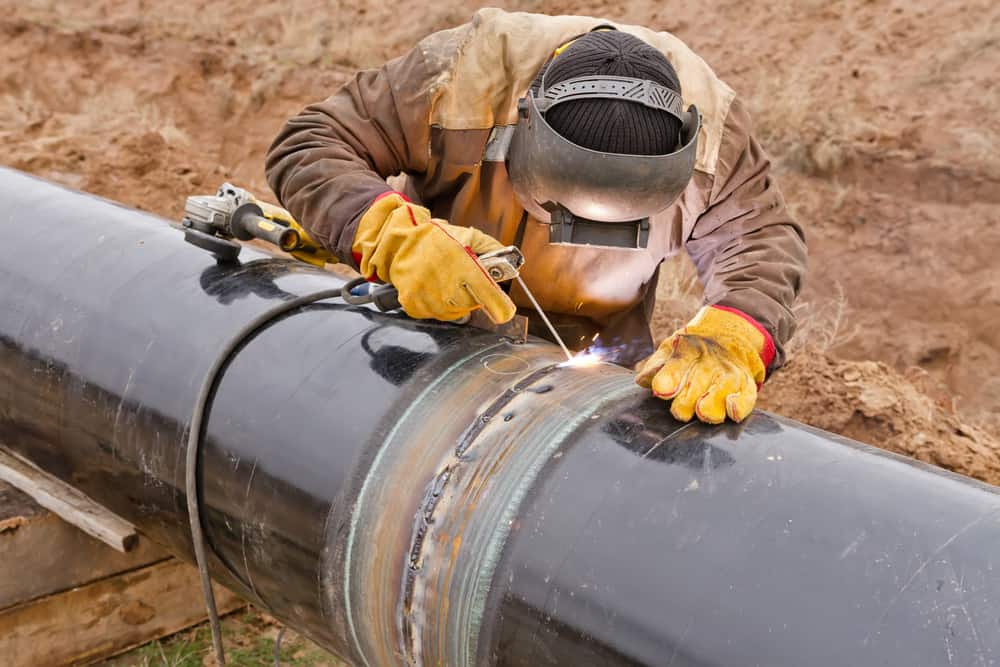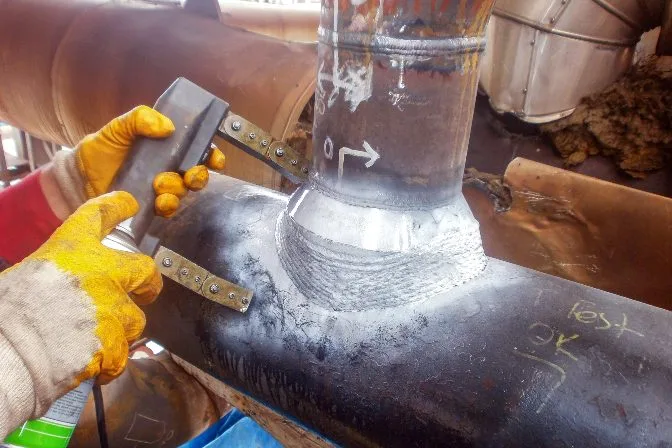Houston Welding Inspection: Accuracy Screening for Ideal Structural Health
Houston Welding Inspection: Accuracy Screening for Ideal Structural Health
Blog Article
The Essential Role of Welding Evaluation: Comprehending the Treatments, Devices, and Criteria That Govern Top Quality Analysis in Welding Procedures
Welding evaluation is an important part of top quality assurance in welding procedures, guaranteeing the architectural stability and safety of bonded assemblies. By utilizing a series of treatments, from pre-weld analyses to sophisticated non-destructive testing strategies, assessors systematically assess weld top quality versus stringent sector requirements. The equipment used in these processes is vital for recognizing possible flaws that might endanger efficiency. Recognizing the interplay between assessment methods and regulative conformity increases vital inquiries about the difficulties dealt with in preserving these necessary methods. What implications do these variables carry the overall efficacy of welding procedures?
Importance of Welding Evaluation
Welding evaluation is essential in guaranteeing the integrity and safety of bonded structures, as it regularly acts as the final checkpoint before components are placed right into service. The significance of this evaluation hinges on its capability to recognize prospective flaws that may jeopardize the performance and longevity of bonded joints. Offered the high stakes included, especially in sectors such as building, aerospace, and automobile, extensive assessment procedures are essential.
Welding issues can develop from various variables, including improper techniques, insufficient devices, or inappropriate products. Failure to spot these issues can result in devastating effects, including structural failures, which may result in injury, loss of life, and considerable financial obligations. Welding assessment gives a methodical strategy to assess the quality of welds, making certain compliance with sector criteria and regulatory requirements.
Additionally, reliable welding inspection contributes to enhancing overall productivity by reducing rework and ensuring that projects stay on time. By cultivating a culture of quality control, companies can also improve their credibility and client count on. Basically, the relevance of welding assessment can not be overstated, as it plays a pivotal duty in securing both human lives and financial investments in facilities.
Key Assessment Treatments
A thorough approach to inspection procedures is important for making sure the high quality and reliability of welded joints. Effective evaluation begins with pre-weld assessments, which consist of assessing welding specs, product residential properties, and joint layouts to determine prospective obstacles. This prep work stage develops a baseline for quality assumptions.
During the welding process, in-process examinations are vital. Examiners keep track of parameters such as warmth input, traveling rate, and electrode angle to guarantee compliance with well established requirements. Visual assessments are the very first line of defense, making it possible for the identification of surface flaws, such as cracks, porosity, or incomplete fusion.
Post-weld assessments involve even more innovative strategies to assess the stability of the joint. This might consist of non-destructive screening (NDT) approaches such as ultrasonic screening, radiographic screening, or magnetic fragment screening. These techniques give much deeper understandings right into the interior structure of the weld, exposing prospective problems that might not show up externally.
Paperwork plays an important duty throughout the inspection procedure. Comprehensive documents of evaluations, including searchings for and corrective actions, ensure traceability and accountability, ultimately adding to continual improvement in welding practices and total quality assurance.
Vital Equipment for Evaluation
Reliable inspection relies upon the usage of customized devices made to evaluate the quality and honesty of bonded joints. Trick devices in this procedure include visual evaluation tools, such as amplifying glasses and borescopes, which enable examiners to recognize surface flaws and abnormalities. Furthermore, ultrasonic screening (UT) equipment plays an important duty by utilizing high-frequency audio waves to identify internal defects within welds, making certain that concealed weaknesses are identified prior to they result in failure.
Radiographic screening (RT) is an additional essential technique, utilizing X-rays or gamma rays to create photos of the welds, revealing inner flaws that may not show up through various other examination approaches - Houston Welding Inspection. Magnetic fragment testing (MT) is employed for ferromagnetic products, enabling examiners to find surface and useful content near-surface defects by using great particles and magnetic areas
Dye penetrant screening (PT) is also significant, involving the application of a fluorescent color to expose surface fractures and stoppages. Each of these tools and strategies adds to a comprehensive examination approach, making certain that welded frameworks meet the needed top quality requirements and remain secure for usage in their particular applications.

Sector Criteria and Regulations
Quality assurance in welding evaluation is considerably affected by industry requirements and regulations that control methods and make sure safety. These criteria function as benchmarks for top quality, describing the required protocols for examination, testing, and documentation. Secret companies such as the American Welding Society (AWS), the American Culture of Mechanical Engineers (ASME), and the International Organization for Standardization (ISO) establish standards that welding professionals must follow throughout the inspection procedure.
Conformity with these criteria is not only a matter of governing obligation yet additionally a vital element of risk administration in welding procedures. They incorporate different facets, consisting of product option, welding methods, and qualifications of workers. AWS D1.1 describes structural welding needs, while ISO 3834 specifies quality requirements for click now welding procedures.
Additionally, sector guidelines determine the essential qualifications for welding assessors, requiring qualifications that affirm their competence. This positioning with standards makes certain that inspections are performed continually and precisely, ultimately guarding the honesty of welded structures. Following these market criteria and guidelines is vital in advertising functional effectiveness and preserving public count on in welding practices.
Difficulties in Welding Examination


Welding evaluation faces many obstacles that can influence the dependability and safety and security of bonded frameworks. One substantial challenge is the complexity of the welding processes themselves, which can differ greatly depending upon materials, joint arrangements, and ecological problems. This variability requires an extensive understanding of diverse inspection strategies and their proper applications.
Another obstacle exists in the evolving nature of welding technology. As new materials and methods are presented, examiners have to continuously upgrade their knowledge and skills to properly assess the top quality of welds. Furthermore, the physical availability of weld locations can impede assessment initiatives, specifically in restricted or high-risk settings.
Additionally, human variables play an important duty in welding examination. Houston Welding Inspection. The subjective nature of aesthetic assessments can lead to inconsistencies, as different assessors may translate the exact same weld in a different way. This highlights the relevance of standardized training and accreditation for inspectors to guarantee a consistent strategy to quality evaluation
Finally, the integration of advanced modern technologies, such as automated examinations and expert system, offers both challenges and possibilities. While these modern technologies can boost precision and effectiveness, they additionally call for significant financial investment and expertise to execute effectively. Addressing these challenges is important for keeping the stability of bonded structures.
Verdict
Welding examination is crucial for making certain the safety and honesty of bonded structures. Inevitably, a durable welding inspection structure not just guarantees compliance with regulations however also enhances general functional performance and dependability. Houston Welding Inspection.
Welding examination is an important part of high quality guarantee in welding procedures, making sure the structural integrity and security of welded assemblies.Welding evaluation is crucial in making sure the stability and security of bonded frameworks, as it regularly offers as the final checkpoint prior to elements are placed into solution. Welding evaluation gives a methodical strategy to assess the top quality his explanation of welds, ensuring conformity with industry criteria and governing demands.
Quality assurance in welding inspection is dramatically influenced by sector criteria and laws that regulate techniques and ensure safety. Secret organizations such as the American Welding Culture (AWS), the American Culture of Mechanical Designers (ASME), and the International Company for Standardization (ISO) develop guidelines that welding professionals should adhere to throughout the examination process.
Report this page